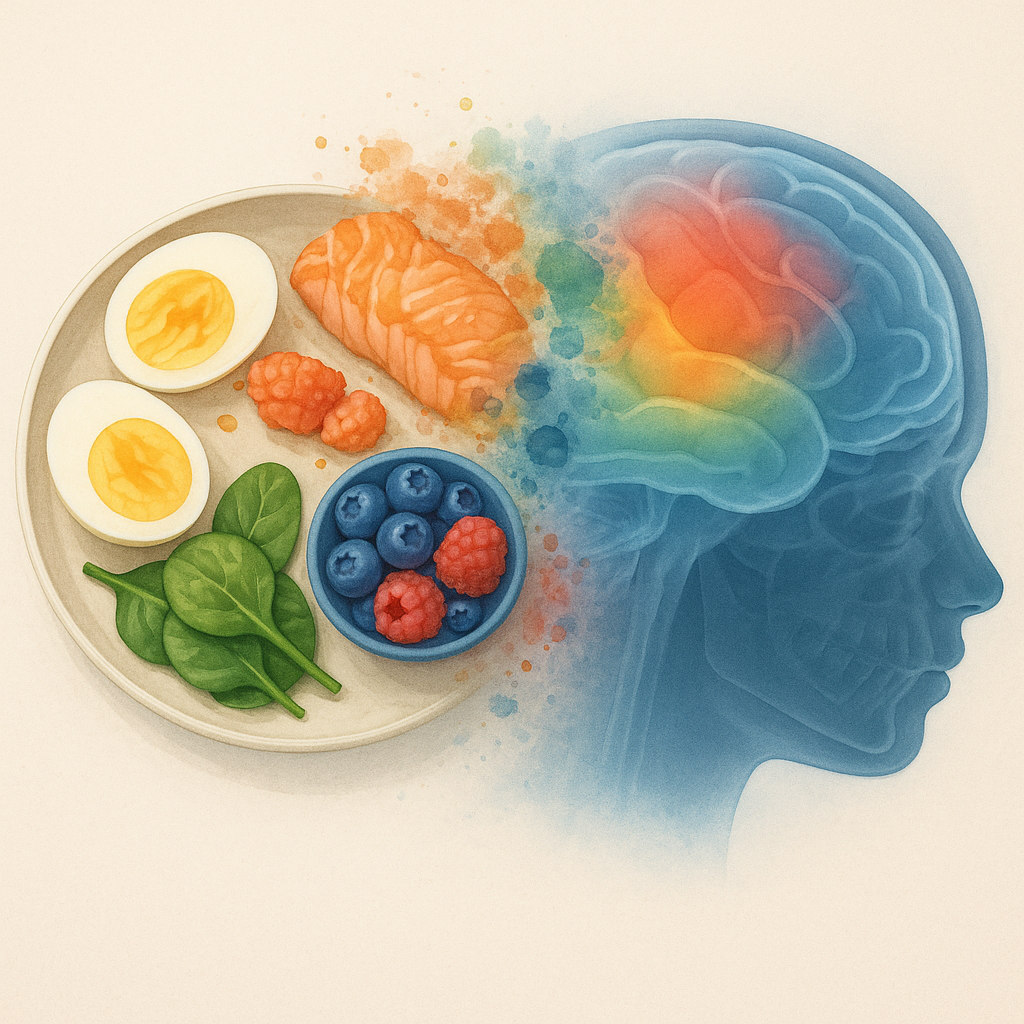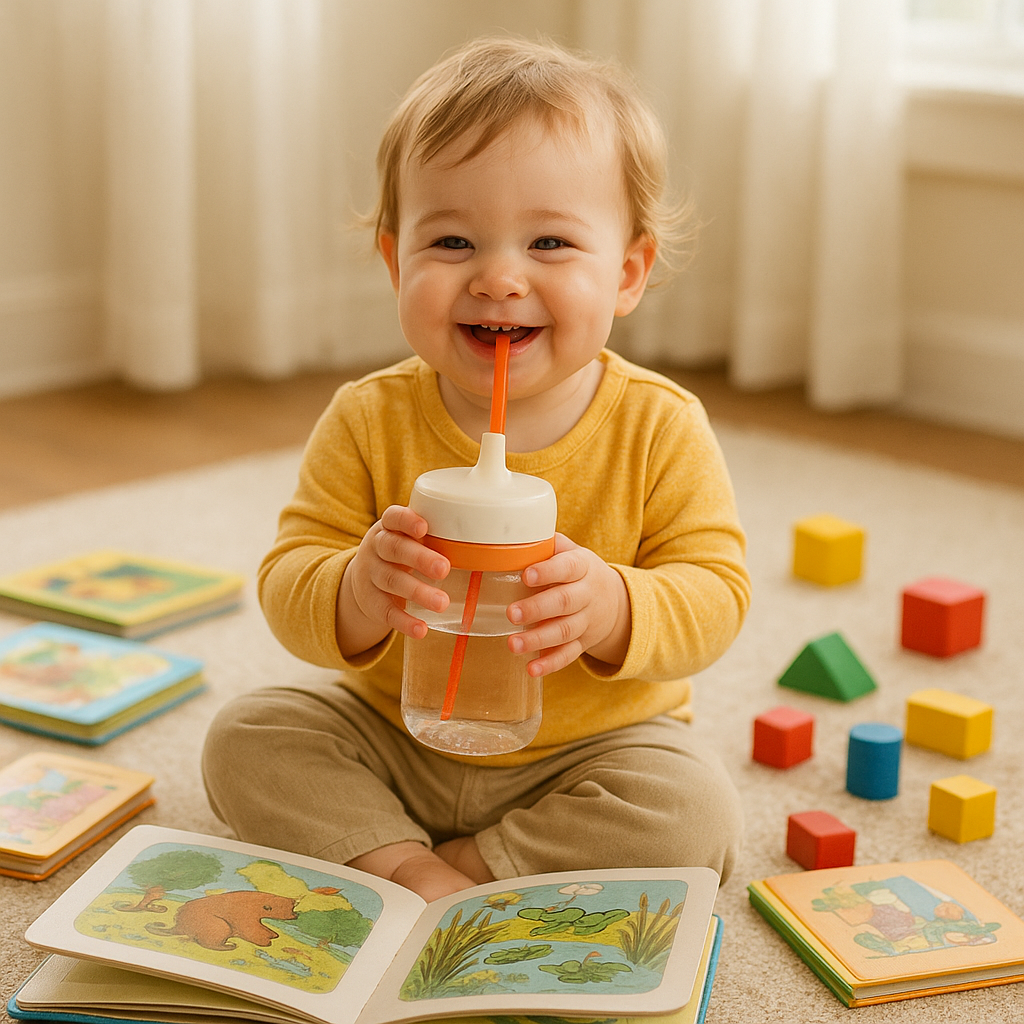Your 2-year-old’s brain is a calorie-hungry powerhouse, burning roughly 60% of their daily energy to build neurons, forge synapses, and lay the foundation for lifelong learning. Yet, nearly one in ten U.S. toddlers lacks sufficient iron, a critical nutrient for healthy brain growth, potentially impacting memory and focus. The good news? Strategic food choices during this pivotal second year can boost brain volume, sharpen cognitive skills, and even add points to future IQ. Dive in to empower your child’s mind for a brighter future.
- Why is the second year such a critical window for brain development?
- What makes toddler brains hungrier than adult brains?
- How do diet patterns reshape the growing brain?
- Can missing nutrients be replaced later?
- Which nutrients build toddler brain power in year two?
- Which “big six” nutrients drive cognition?
- How much choline does my toddler need, and where do I find it?
- Why are DHA and other omega-3s non-negotiable?
- How do iron and zinc affect attention and behavior?
- What roles do iodine and B-vitamins play?
- Do antioxidants really matter?
- What brain-boosting foods and meal patterns fit a toddler’s day?
- What does a sample “brain plate” look like?
- How much is “just right” for tiny tummies?
- How often should they eat?
- How can parents tackle picky eating and tight budgets without sacrificing brain health?
- What feeding approach eases mealtime battles?
- Which budget swaps deliver maximum nutrients?
- Any flavor hacks for stealth nutrition?
- Can vegetarian, vegan, or allergy-friendly diets still fuel cognitive growth?
- How do plant-based families cover protein and iron?
- What about DHA, B12, and iodine gaps?
- How do we keep meals safe?
- How do sleep, hydration, and play amplify nutrition’s effect on the brain?
- Does sleep really lock in learning?
- How much water supports focus?
- What activities turbocharge neural growth?
- What does new research reveal about diet and toddler brain structure?
- Which findings stand out from the Generation R study?
- How big could global gains be?
- Are there limits to the data?
- Your top questions, answered
- Final thoughts
Why is the second year such a critical window for brain development?
What makes toddler brains hungrier than adult brains?
A toddler’s brain is a metabolic marvel, consuming about 60% of their daily calories—twice the proportion of an adult’s brain. By age two, the brain reaches 80% of its adult size, with rapid growth in areas responsible for memory, problem-solving, and language. This energy demand makes every meal a building block for neural connections.
How do diet patterns reshape the growing brain?
Long-term studies, like the Generation R cohort, show that a “prudent” diet—rich in whole grains, healthy fats, fish, and colorful produce—can increase brain volume by up to 8.9 cm³ by age ten, enhancing cognitive potential. Conversely, a “Western” diet heavy in processed snacks and sugars is linked to a 7 cm³ reduction in brain volume and lower IQ scores. Early nutrition shapes the brain’s architecture, influencing executive functions like planning and attention. See Dietary patterns, brain morphology and cognitive performance in children.
Can missing nutrients be replaced later?
Nutrient deficits in year two are hard to fully reverse. Synapse formation and myelination, which insulate neural pathways for faster signaling, peak during this period. While later interventions can help, they rarely achieve complete catch-up, making year two a critical window for establishing a strong neural foundation. For more on early brain growth, see 7 Essential Nutrients for Your Baby’s Brain.

Which nutrients build toddler brain power in year two?
Which “big six” nutrients drive cognition?
Six key nutrients fuel toddler brain development: choline, DHA/omega-3s, iron, zinc, iodine, and B-vitamins. Each plays a unique role, from building neuron membranes to supporting oxygen delivery and memory circuits.
How much choline does my toddler need, and where do I find it?
Choline, vital for memory and neural signaling, is needed at about 200–300 mg daily for 1- to 3-year-olds. Two whole eggs (≈294 mg) or ½ cup of cooked salmon (≈220 mg) meet this requirement. Try scrambled eggs with veggies or egg muffins for variety.
Why are DHA and other omega-3s non-negotiable?
DHA, a key omega-3 fatty acid, forms the backbone of neuronal membranes, supporting learning and attention. Toddlers need 50–100 mg daily, achievable through 1 oz of salmon, sardines, or DHA-fortified yogurt. Adequate DHA to improve cognitive scores in preschoolers. Explore more at DHA and Omega-3: Why They’re Key for Your Baby’s Brain.
How do iron and zinc affect attention and behavior?
Iron delivers oxygen to the hippocampus, a memory hub, while zinc regulates neurotransmitters for focus and behavior. Deficiency in either doubles the risk of ADHD-like symptoms. Offer 7 mg of iron daily (lean beef, fortified cereals, beans) and 3 mg of zinc (poultry, pumpkin seeds). Pair with vitamin C-rich fruits like oranges to boost absorption.
What roles do iodine and B-vitamins play?
Iodine supports thyroid hormones that drive brain growth, with a daily need of 90 mcg (found in yogurt or iodized salt). B-vitamins (B6, B12, folate) enable DNA methylation and memory circuits, sourced from dairy, leafy greens, and fortified grains. Deficiencies can impair language development.
Do antioxidants really matter?
Antioxidants like vitamins C, E, and carotenoids shield newborn neurons from oxidative stress, which can disrupt growth. Berries, broccoli, and sweet potatoes deliver these in toddler-friendly forms, supporting long-term cognitive health.
What brain-boosting foods and meal patterns fit a toddler’s day?
What does a sample “brain plate” look like?
A balanced day might include:
- Breakfast: Spinach-egg scramble with whole-grain toast and a sliced orange.
- Morning Snack: Plain yogurt with blueberries and a sprinkle of chia seeds.
- Lunch: Mashed salmon with sweet potato and steamed peas.
- Afternoon Snack: Apple slices with a thin spread of peanut butter.
- Dinner: Lentil “meatballs” with quinoa and roasted carrots.
How much is “just right” for tiny tummies?
Use your toddler’s palm as a portion guide: one palm-sized serving of protein (e.g., 1 oz fish or ½ egg), one palm of fruit or vegetables, and a fist-sized portion of grains. Fish should be served 2–3 times weekly in 1 oz portions to balance benefits and safety.
How often should they eat?
Three meals and two nutrient-dense snacks daily ensure steady glucose levels, stabilizing moods and reducing tantrums. Space meals 2–3 hours apart for optimal energy.
Need recipe inspiration? Explore 10 Brain-Boosting Foods for Babies and Toddlers.
How can parents tackle picky eating and tight budgets without sacrificing brain health?
What feeding approach eases mealtime battles?
Responsive feeding—offering a variety of foods and letting toddlers choose how much to eat—builds trust and encourages exploration. Research shows children may need 10–15 exposures to accept new foods, so patience is key. Visit; ‘For me it’s just the conversation:’ responsive feeding influences among early childhood educators.
Which budget swaps deliver maximum nutrients?
Eggs ($0.20 each), canned salmon ($3 per can), frozen berries ($2 per pound), and bulk beans ($1 per pound) are affordable yet nutrient-dense. Many qualify for WIC or SNAP benefits, making them accessible for low-income families.
Any flavor hacks for stealth nutrition?
Blend spinach into fruit smoothies, mix lentils into tomato-based “meatballs,” or use DHA-fortified milk in oatmeal. Grate zucchini into muffins for hidden veggies. Compare options at Homemade vs. Store-Bought Baby Food.
Can vegetarian, vegan, or allergy-friendly diets still fuel cognitive growth?
How do plant-based families cover protein and iron?
Pair beans, lentils, or tofu with vitamin C-rich foods (e.g., tomatoes, bell peppers) to triple iron absorption. Quinoa and soy provide complete proteins, meeting the 13 g daily protein need for toddlers.
What about DHA, B12, and iodine gaps?
For DHA, offer ground walnuts, flaxseed, or a 100 mg algae-based supplement. Fortified plant milks deliver B12, and iodized salt or seaweed flakes cover iodine (90 mcg daily). Check 7 Essential Nutrients for Your Baby’s Brain for plant-based sources.
How do we keep meals safe?
Spread nut butters thinly to avoid choking hazards, and choose soy or oat yogurt for dairy allergies. Always introduce new foods gradually to monitor for reactions.
How do sleep, hydration, and play amplify nutrition’s effect on the brain?
Does sleep really lock in learning?
Sleep is critical for memory consolidation. Toddlers need 11–14 hours daily, including naps, to process learning fueled by nutrients. A consistent bedtime routine enhances these benefits.
How much water supports focus?
Offer 4–5 toddler-sized cups (32–40 oz) of water daily. Even mild dehydration (2%) can impair attention and mood, so keep a sippy cup handy.
What activities turbocharge neural growth?
Daily activities like reading picture books, singing songs, or stacking blocks stimulate synaptic pruning, strengthening neural networks. Fiber-rich foods like oats and apples support the gut-brain axis, enhancing cognition.

What does new research reveal about diet and toddler brain structure?
Which findings stand out from the Generation R study?
The Generation R study found that toddlers with diets high in whole grains, dairy, and healthy fats at ages 1–2 showed increased cortical gyrification in executive brain areas by age ten, linked to better problem-solving and decision-making. For more information visit: Dietary patterns, brain morphology and cognitive performance in children.
How big could global gains be?
Eliminating iron, zinc, and iodine deficiencies globally could raise average IQ by about 10 points, according to public-health models. This underscores the universal impact of early nutrition.
Are there limits to the data?
Many studies rely on parent-reported dietary data and focus on Western populations, limiting generalizability. More diverse, objective research is needed to confirm findings across cultures. For deeper reading, visit Iron Deficiency in Babies: Protecting Early Brain Development in the First 1,000 Days.
Your top questions, answered
-
How much fish is safe for my 18-month-old?
One 1 oz serving of low-mercury fish, two to three times per week, is both safe and beneficial. Choose salmon, sardines, or cod. -
Do toddlers need supplements?
Only when a confirmed gap exists, such as vegan B12 or low DHA. Whole foods remain the gold standard. -
What are early signs of nutrient deficiency?
Fatigue, pale skin, slow language gains, and poor attention can signal iron or zinc shortfalls—contact your pediatrician for testing. -
Is breakfast really that critical?
Yes. A protein-plus-whole-grain breakfast improves morning attention and memory compared with sugary pastries or skipping the meal.
For earlier feeding stages, see Breast Milk vs. Formula: What’s Best for Baby’s Brain?.
Final thoughts
Your toddler’s second year is a golden opportunity to shape their brain’s future. By filling their plate with nutrient-rich foods like eggs, salmon, and berries, you’re investing in sharper memory, better problem-solving, and a higher IQ. Combine these choices with ample sleep, hydration, and play to amplify the benefits. Embrace the journey—each colorful bite today fuels your child’s bright ideas tomorrow.